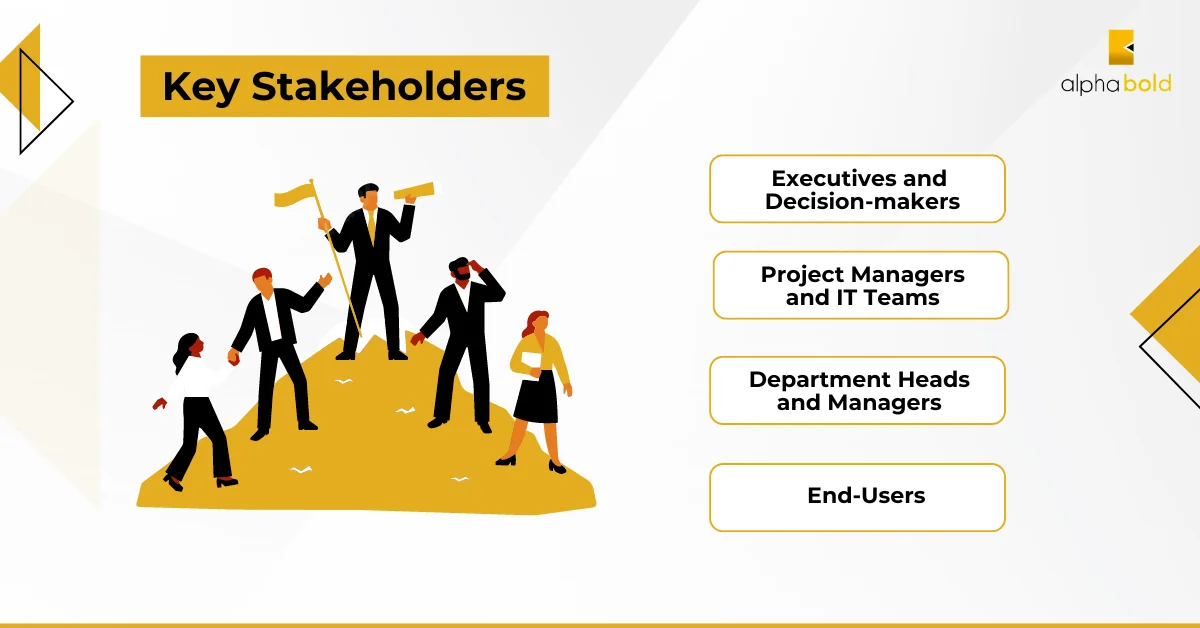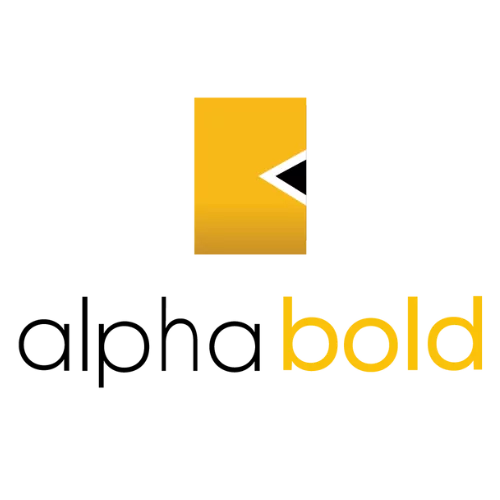Introduction
Implementing new software can be a transformative experience for a business, promising increased efficiency, improved workflows, and happier employees. Yet, the journey from selection to successful integration can be fraught with challenges. According to a 2022 McKinsey report, a significant portion of software implementations fail to meet expectations, experiencing delays, budget overruns, and ultimately, user frustration. One critical factor that can make or break a software implementation project? Stakeholder alignment.
In the context of software implementation, stakeholders are the individuals and groups with a vested interest in the project’s success. This can range from executives with budgetary concerns to end-users who will be utilizing the software daily. Aligning these diverse stakeholders – ensuring everyone is on the same page about goals, expectations, and the change management process – is crucial for navigating the implementation journey smoothly.
Understanding Stakeholder Alignment: Who are Your Stakeholders?
In the world of software implementation, stakeholders are those individuals and groups who are impacted by, or have a stake in, the success of the project. Their needs, perspectives, and level of influence will vary depending on their role within the organization and the specific software being implemented. Achieving stakeholder alignment is crucial, as it ensures that everyone involved understands and agrees on the project goals, which facilitates smoother implementation and increases the likelihood of success.

Here’s a breakdown of some key stakeholder groups you’ll encounter:
- Executives and Decision-makers: These individuals hold the purse strings and have ultimate approval over budget allocation and project scope. Their primary concern is ensuring the software aligns with the company’s strategic goals and delivers a positive return on investment (ROI).
- Project Managers and IT Teams: Responsible for overseeing the day-to-day implementation process, this group focuses on technical feasibility, resource allocation, and ensuring the software integrates seamlessly with existing systems.
- Department Heads and Managers: These individuals represent the departments that will be directly utilizing the software. Their needs and concerns will be specific to their area of operation. For instance, a Sales Manager implementing a Customer Relationship Management (CRM) system might prioritize features related to lead nurturing and sales pipeline management.
- End-Users: The people who will interact with the software on a daily basis. Their buy-in and adoption are crucial for the project’s success. Their needs will focus on ease of use, functionality, and how the software can improve their daily tasks.
Stakeholders by Implementation Type:
The specific stakeholder landscape can also differ based on the type of software being implemented. Here’s a quick comparison:
- Customer Relationship Management (CRM) Implementation: Stakeholders might include sales, marketing, and customer service departments, each with a vested interest in features that enhance customer interactions and lead management.
- Enterprise Resource Planning (ERP) Implementation: This large-scale project impacts nearly all areas of a business. Key stakeholders could encompass finance, human resources, operations, and supply chain departments, all needing functionalities that streamline their specific workflows and data management.
Further Reading: Easing in ERP Implementations with Effective Communication
Understanding the unique perspectives and priorities of each stakeholder group is vital for effective communication and ensuring everyone feels invested in the successful implementation of the new software.
Ready to embark on your software implementation journey?
Alphabold Consulting, we specialize in helping businesses achieve successful software implementations through our proven stakeholder alignment strategies. Request a consultation today to learn how our team of experts can help you navigate the process and unlock the full potential of your new software.
Request a ConsultationWhy Stakeholder Alignment Matters?
Imagine a team embarking on a road trip without a clear destination or agreed-upon route. Sounds chaotic, right? The same principle applies to software implementation. When stakeholders are misaligned, lacking a shared vision and understanding of project goals, the results can be just as disruptive.
Here’s how misalignment can derail your software implementation:
- Project Delays and Cost Overruns: Unforeseen needs and conflicting priorities from different stakeholders can lead to feature creep and scope changes. This can push back deadlines and inflate the project budget significantly.
- Feature Confusion and Functionality Gaps: Miscommunication between executives and end-users can result in a software solution that doesn’t meet actual user needs. Features prioritized by executives might not address the daily workflow challenges faced by end-users, leading to frustration and ultimately, low user adoption.
- Change Management Hurdles: Without buy-in from key stakeholders, especially department heads and end-users, resistance to the new software becomes inevitable. This can make the change management process a struggle, hindering employee training and adoption of the new system.
Now, let’s flip the script and consider the benefits of stakeholder alignment:
- Clear Vision and Efficient Decision-Making: When everyone is on the same page about goals and priorities, decision-making becomes more streamlined. Stakeholders can work collaboratively to address challenges and make informed choices that benefit the project as a whole.
- Targeted Functionality and User Adoption: By understanding user needs and aligning them with executive priorities, the software implementation can be tailored to deliver functionalities that truly empower end-users. This increases user satisfaction and adoption, maximizing the software’s return on investment.
- Reduced Risk and Smoother Implementation: A well-aligned stakeholder group can anticipate potential roadblocks and work together to mitigate risks. This fosters a collaborative environment that promotes clear communication and smoother implementation throughout the project lifecycle.
Investing time and effort in stakeholder alignment at the outset is a proactive strategy that can significantly increase your chances of successful software implementation.
Further Reading: Understanding Project Methodologies for Your Next Software Implementation
Strategies for Stakeholder Alignment
Achieving stakeholder alignment is an ongoing process that requires consistent effort throughout the software implementation journey. Here are some key strategies to consider:
- Clearly Define Project Goals and Objectives: The foundation for a successful implementation starts with a well-defined roadmap. Work collaboratively with stakeholders to establish clear project goals that align with the overall business strategy. These goals should be translated into measurable objectives that outline the desired outcomes of the software implementation.
- Translate Business Needs into Tangible Software Goals: Bridge the gap between business needs and technical functionalities. Work with department heads and end-users to understand their specific challenges and workflows. Then translate these needs into actionable software features that directly address user pain points and contribute to achieving the defined project goals.
- Effective Communication is Key: Open and regular communication is essential for keeping stakeholders informed and engaged. Develop a communication plan that caters to the different needs of various stakeholder groups. This might include:
- Executive Briefings: Regular high-level updates focused on progress made towards achieving strategic goals.
- Departmental Meetings: Detailed discussions with department heads and users to address specific concerns and gather feedback.
- Progress Reports: Circulate regular reports that outline project milestones, timelines, and any potential roadblocks.
- Software Demos: Organize demonstrations of the software at various stages of development to showcase progress and gather user feedback.
- Manage Expectations Proactively: Setting realistic expectations upfront is crucial for maintaining stakeholder buy-in. Work with the project team to establish achievable timelines for implementation and clearly communicate the range of functionalities that can be delivered within the project scope and budget.
- Encourage Active Participation: Don’t let stakeholders become passive observers. Create opportunities for them to actively contribute to the decision-making process. This can involve conducting workshops to gather user feedback, establishing stakeholder committees for ongoing dialogue, or utilizing surveys to gauge user sentiment.
By implementing these strategies, you can foster a collaborative environment where stakeholders feel valued and invested in the success of the software implementation. This will pave the way for a smoother project journey and ultimately, a solution that delivers the desired benefits to your organization.
Ready to embark on your software implementation journey?
Alphabold Consulting, we specialize in helping businesses achieve successful software implementations through our proven stakeholder alignment strategies. Request a consultation today to learn how our team of experts can help you navigate the process and unlock the full potential of your new software.
Request a ConsultationConclusion
The road to successful software implementation is paved with clear communication and stakeholder alignment. By bringing together diverse perspectives, establishing shared goals, and actively engaging stakeholders throughout the process, you can significantly increase your chances of a smooth and successful project.
Remember, a well-aligned stakeholder group foster:
- Clear Vision and Efficient Decision-Making
- Targeted Functionality and User Adoption
- Reduced Risk and Smoother Implementation
Investing in stakeholder alignment is an investment in the future of your software solution.
Explore Recent Blog Posts








